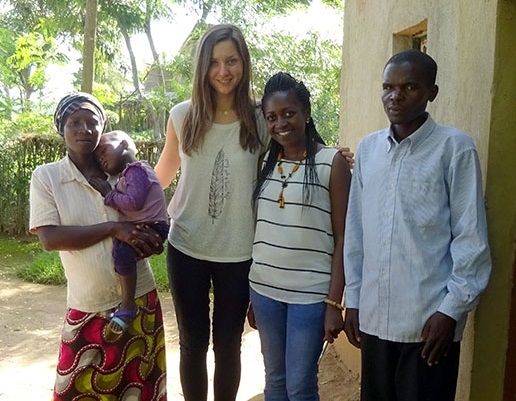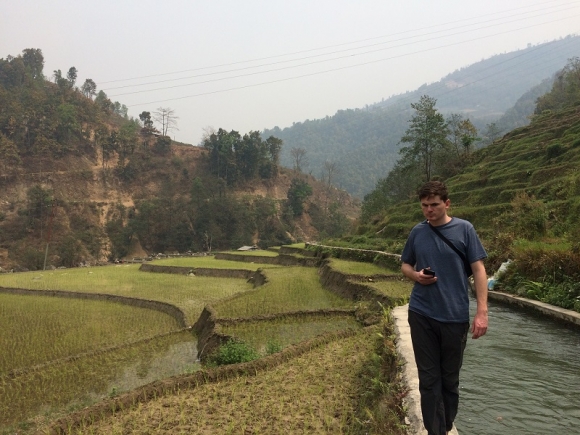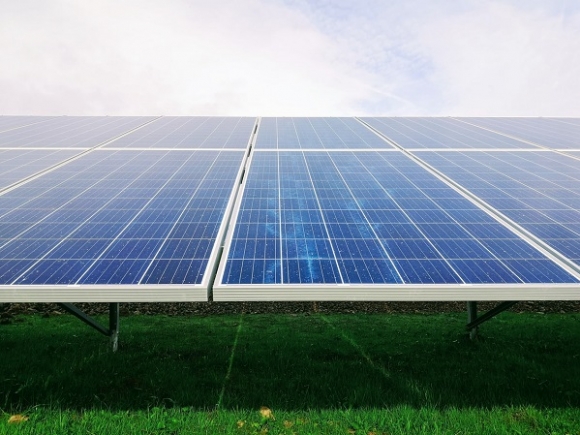
Here, we continue this series of ‘Five Quick Questions’ blog posts, where we share some of our conversations with researchers and practitioners who are specialising in issues related to Low Carbon Energy and International Development, and introduce the people we meet and the issues they are concerned with or curious about. If you are doing some interesting new research or if you would like to recommend someone you think we should ask Five Questions to, please contact us.
The second Five Questions post below introduces Iwona Bisaga of University College London, and presents a conversation about her research exploring the needs and aspirations of Solar Home System users in the context of Rwanda:
Solar Home Systems, the Internet of Things and life in Rwanda.
- A brief conversation with Iwona Bisaga, University College London
In the second of my 5 Questions Series I have been speaking to Iwona Bisaga, who is a PhD Student at University College London in the Department of Civil, Environmental and Geomatic Engineering. Iwona is doing her research in Rwanda, where she is focusing on better understanding the needs and aspirations of Solar Home System users; how they use energy, what they use it for, how it impacts on their lives and what energy aspirations they have for the future. As technologies Solar Home Systems have developed greatly in the last 20 years and a lot has been learned also about their deployment – about ways of getting them to often poor people living off-grid. We know less about what happens after they have been installed and as a result less about where and how they can come to have meaningful and transformative impact on people’s lives. One of the things Iwona has been looking at is SMART Solar monitoring (a remote monitoring platform) and Internet Of Things (IoT) technology; what their benefits may be to end-users and the providers alike, and what challenges there may be around their uses. Iwona has also been living in Rwanda whilst doing her research, which has given her great insights and prompted her to ask new questions better attuned to and relevant for that locality.

Why is it interesting to talk about Solar Home System (SHS) users in Rwanda?
I believe it’s interesting to talk about them for a number of reasons. For one, SHSs are one of the key off-grid energy technologies which the Government of Rwanda have included in their ambitious plans of providing Rwandans with energy access, making up a considerable proportion of their 48% off-grid electrification target (with the remaining 52% supported by grid connections). Secondly, it is interesting because the SHS technology has in recent years reached hundreds of millions of people worldwide and we still know relatively little about how it’s used and whether it supports the needs and demands of households who adopt it. Thirdly, in order to better understand the impact SHSs are having on the users and gauge their potential for being a sustainable, long-term solution for accessing energy, we have to look to the end-users, their energy use habits, their experiences and perceptions, and their current and future needs, or aspirations. Last but not least, talking about the users is interesting (and important) to inform the strategies of both the private and the public sector working on off-grid electrification, which may fall short of meeting the needs of those currently unelectrified if their voices are excluded.
What are you learning about the needs and aspirations of energy users and what is the difference between looking at needs and aspirations?
What I have seen come through quite clearly in my research is that here is a set of basic needs that everyone shares, these are lighting, mobile phone charging and access to information (via TV or radio). Light is transformative in people’s homes, mobile phone ownership is high and daily charging is in high demand, while access to information gives people a sense of being connected to the world. Beyond those basics, there is a wide range of needs and aspirations among SHSs users: from shavers, irons, fans, to laptops, smartphones and wielding machines. For those who only use the system at home, other appliances are of interest than for those who aspire to open businesses or already run businesses and want to improve them. The difference between looking at needs and aspirations is that needs are those services and goods which are critical for families to be able to perform basic activities and improve their well-being, whereas aspirations refer more to those services and goods which are not critical but could be just as transformative in the future and would enable further improvements in the household and potentially offer the possibility of starting new activities, often (though not always) including those for income generation. You could think of it as ‘what I really need (now)’ vs ‘what I would like (in the future)’.
What is IoT technology - what does it enable and what are the challenges?
In a nutshell, the Internet of Things (IoT) is a network of devices or appliances with embedded software and internet connectivity which communicate with one another and exchange data. We have started hearing about it more and more recently, often in relation to the IoT at home, with a network of internet-connected phones, laptops, lamps, thermostats and other devices. In the case of SHSs, the IoT technology enables providers to have constant insight into the usage of the systems, including the ability to track different parameters, and provide proactive services in case of any challenges or abnormalities, thus impacting on customer satisfaction and uninterrupted usage, which in turn keeps customer retention high. It also means that companies can reduce risk by being able to switch the systems off once a payment is missed, which has been the basis for the development of ever more prevalent PAYG models, making them more attractive to investors. There are challenges, as to be expected. We are mostly talking about rural areas here, often very remote, where connectivity might be an issue. If you don’t have that, the technology cannot function. Another one is the ethical side of things and the question about tracking people’s energy usage data which can tell us a lot about the household. What we do and how we deal with that information, and how much of it system owners want us to see, is something the IoT technology sector everywhere will have to continue thinking about.

What makes energy technologies appropriate?
That’s an interesting question to which I’m afraid I don’t have a simple answer. Appropriate technologies can mean different things to different people and we have seen that in the debates which have followed the publication of Schumacher’s Small is Beautiful in the 60s. To me, appropriate technologies are those which are suitable for the local context, are robust and satisfy the needs of the target users while offering an alternative to the big infrastructure, which often cannot (and does not) reach certain regions and households, is beyond reach for reasons of affordability or any other, or simply does not offer the best solution for accessing the desired services. Appropriate energy technologies, to me, would fall under the same definition. For example, in remote areas with low to medium household density and no grid availability, SHSs might be the most appropriate, while in those with a higher density mini-grids might make more sense. In some instances solar will be the best technology while in others it might be wind, hydro or hybrid solutions, depending on the availability of resources and their affordability for the end-users. Several different energy technologies might be appropriate at the same time, and it’s down to the customer to decide which one suits him or her best, and which one will satisfy their needs.
How has living in Rwanda impacted on the development of your research?
Since the focus of my research is on Rwanda, living here has allowed me to get more exposure to the dynamics of the off-grid solar sector and has therefore kept me on my feet about any changes, new developments and new lines of thinking about rural electrification. That, in turn, has impacted on the direction of my research and the kinds of questions that I would like to answer by the end of it. It has also been much easier to interact with various stakeholders involved in this sector, which has been invaluable whenever I had any questions or points I required clarification on. Being closer to the end-users and able to spend more time with them has also been hugely beneficial. When you’re far away from where the people you are interested in learning more about are, you feel very detached and start doubting yourself if you’re on the right track. I also feel that the familiarity with the local culture and the daily life has made me better placed to explore the subject with (I hope) slightly less bias than if I remained a complete outsider (which I like to think I’m not anymore).

You can read more about Iwona’s research on her website: https://www.imbisaga.com/



